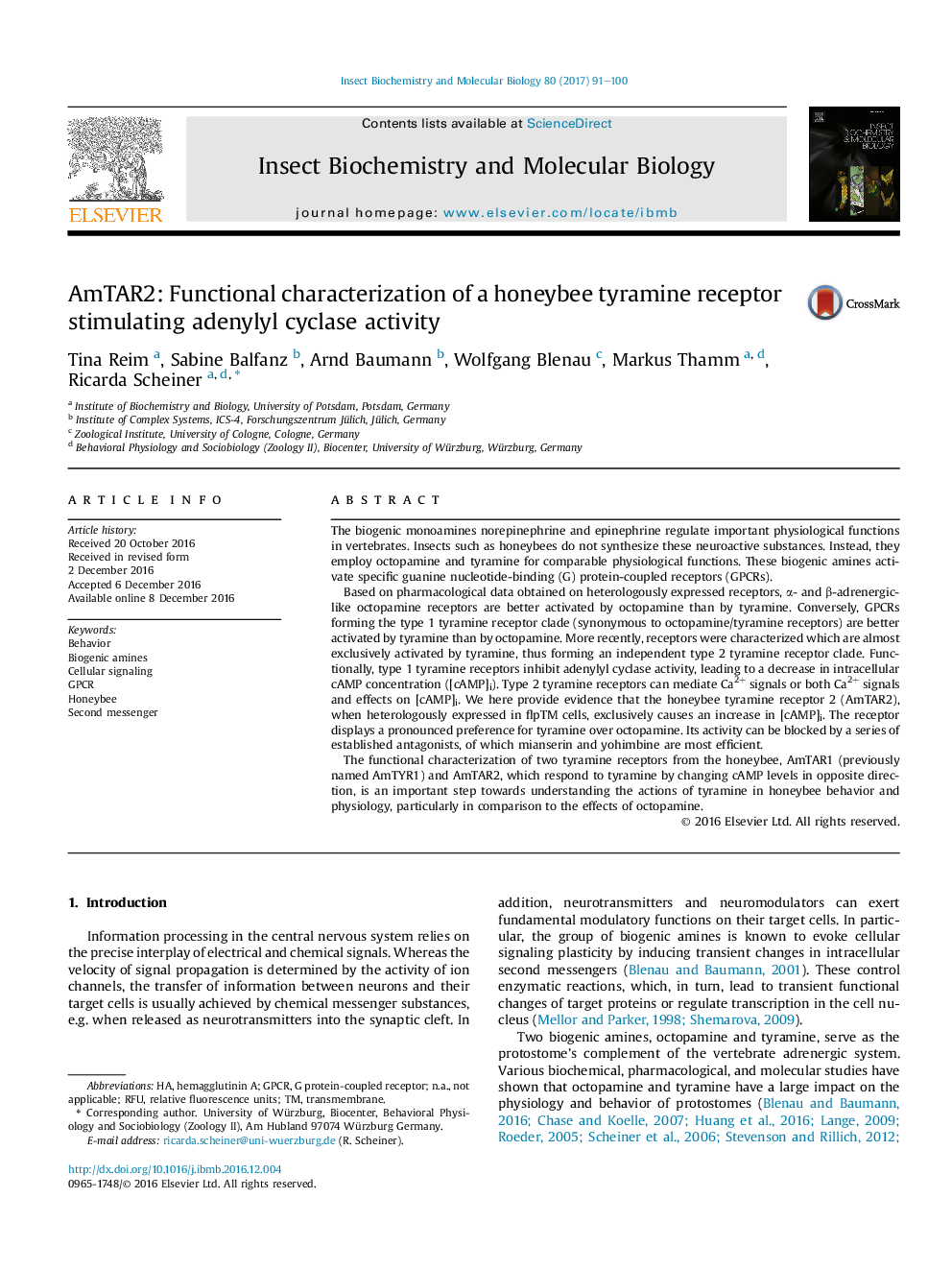| کد مقاله | کد نشریه | سال انتشار | مقاله انگلیسی | نسخه تمام متن |
|---|---|---|---|---|
| 5511192 | 1539472 | 2017 | 10 صفحه PDF | دانلود رایگان |

- The honeybee genome contains two genes encoding tyramine receptors.
- We functionally characterized the second honeybee tyramine receptor, AmTAR2, in flpTM cells.
- AmTAR2 displays pronounced preference for tyramine over octopamine.
- AmTAR2 exclusively induces cAMP synthesis upon activation.
- AmTAR2 is effectively blocked by mianserin and yohimbine.
The biogenic monoamines norepinephrine and epinephrine regulate important physiological functions in vertebrates. Insects such as honeybees do not synthesize these neuroactive substances. Instead, they employ octopamine and tyramine for comparable physiological functions. These biogenic amines activate specific guanine nucleotide-binding (G) protein-coupled receptors (GPCRs).Based on pharmacological data obtained on heterologously expressed receptors, α- and β-adrenergic-like octopamine receptors are better activated by octopamine than by tyramine. Conversely, GPCRs forming the type 1 tyramine receptor clade (synonymous to octopamine/tyramine receptors) are better activated by tyramine than by octopamine. More recently, receptors were characterized which are almost exclusively activated by tyramine, thus forming an independent type 2 tyramine receptor clade. Functionally, type 1 tyramine receptors inhibit adenylyl cyclase activity, leading to a decrease in intracellular cAMP concentration ([cAMP]i). Type 2 tyramine receptors can mediate Ca2+ signals or both Ca2+ signals and effects on [cAMP]i. We here provide evidence that the honeybee tyramine receptor 2 (AmTAR2), when heterologously expressed in flpTM cells, exclusively causes an increase in [cAMP]i. The receptor displays a pronounced preference for tyramine over octopamine. Its activity can be blocked by a series of established antagonists, of which mianserin and yohimbine are most efficient.The functional characterization of two tyramine receptors from the honeybee, AmTAR1 (previously named AmTYR1) and AmTAR2, which respond to tyramine by changing cAMP levels in opposite direction, is an important step towards understanding the actions of tyramine in honeybee behavior and physiology, particularly in comparison to the effects of octopamine.
232
Journal: Insect Biochemistry and Molecular Biology - Volume 80, January 2017, Pages 91-100